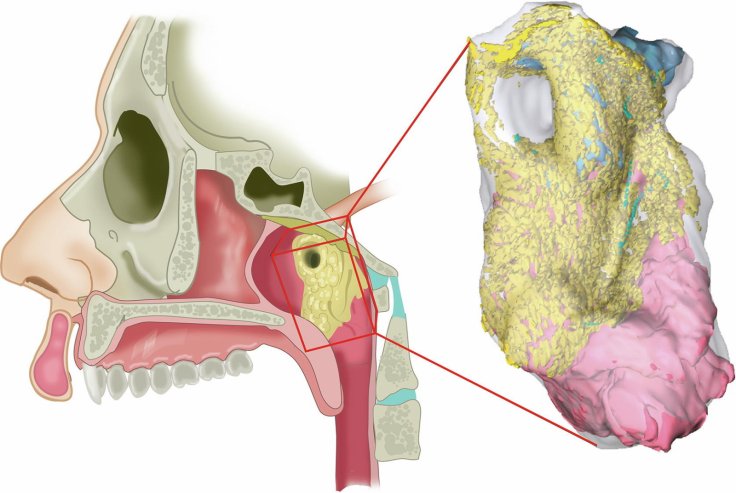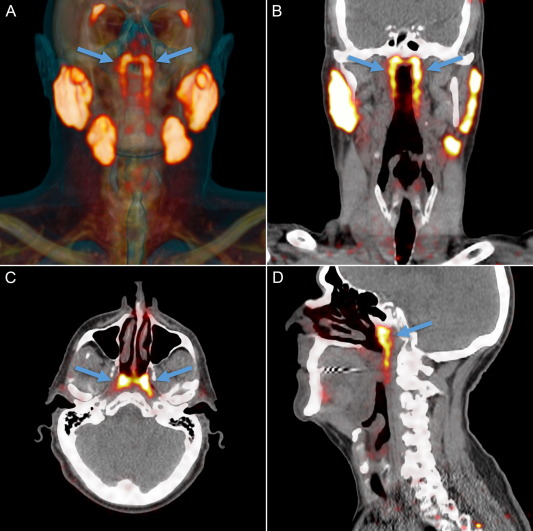Scientists and clinicians have studied the human body for centuries. It would be justified to believe anything and everything that can be learnt about the human body has already been. However, scientists from the Netherlands Cancer Institute have made an unlikely discovery that only shows that there is much that is left to be discovered of the human body. The scientists stumbled upon a new location of salivary glands in the center of the head.
The unexpected discovery was made when two researchers were investigating a new kind of scan known as PSMA PET/CT scan. They found that two areas were illuminated at the extreme back of the nasopharynx—upper part of the throat exactly behind the nose—and looked similar to all known major salivary glands.
An Unexpected Discovery

Radiation oncologist Wouter Vogel and oral and maxillofacial surgeon Matthijs Valstar were examining the side effects that radiation may have on the neck and the head. For the study of the scans, they used a marker to spare patients any discomfort during treatment. This helped highlight the salivary glands.
The location of the salivary glands at the back of the nasopharynx was unusual as such glands are not expected to be located at such locations. "People have three sets of large salivary glands, but not there. As far as we knew, the only salivary or mucous glands in the nasopharynx are microscopically small, and up to 1000 are evenly spread out throughout the mucosa. So, imagine our surprise when we found these," explained Vogel.
Not a Fluke Anomaly

Through extensive examination of the scans of the 100 patients who were part of the study, the researchers successfully confirmed the presence of the glands in all the patients. The PSMA PET/CT scan was being employed as these patients struggled with prostate cancer. Organs such as salivary glands are easily imaged and captured by this new scanning technique.
"The two new areas that lit up turned out to have other characteristics of salivary glands as well. We call them tubarial glands, referring to their anatomical location," said Vogel. The researchers were able to confirm this through the study of tissues from two human bodies in collaboration with colleagues from Amsterdam UMC.
New Glands Vulnerable to Radiation Therapy
Talking about their initial research that led to the discovery of the new glands—patients who suffered from neck and head cancer, including tumors found in the tongue and the throat—the authors said that radiation therapy can cause damage to the salivary glands and give rise to severe complications. The newly found salivary glands were not immune to this damage as well.

To understand this, the researchers scrutinized data from 723 patients who had received radiation therapy. Through their analysis, the authors concluded that the higher the level of radiation these newly-found areas were exposed to, the more severe were the complications they experienced later; much like what known salivary glands endure.
Therefore, the findings of the study also open new avenues for the treatment of cancer. "For most patients, it should technically be possible to avoid delivering radiation to this newly discovered location of the salivary gland system in the same way we try to spare known glands," expressed Vogel. He added that the next step of the research is to find ways in which these glands can be protected and in which patients, ultimately enabling patients in experiencing fewer side effects from the treatment.









